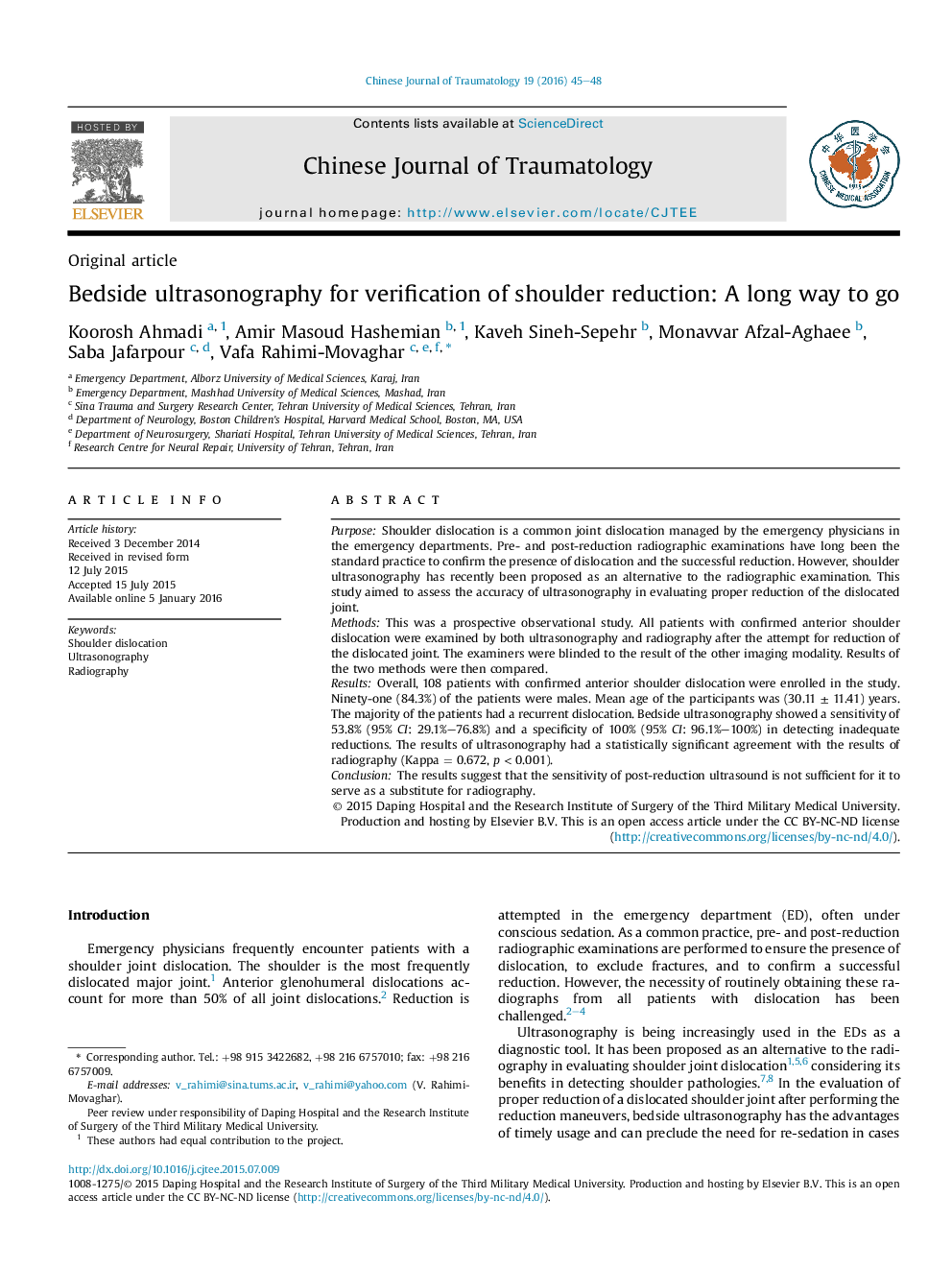| Article ID | Journal | Published Year | Pages | File Type |
|---|---|---|---|---|
| 3107113 | Chinese Journal of Traumatology | 2016 | 4 Pages |
PurposeShoulder dislocation is a common joint dislocation managed by the emergency physicians in the emergency departments. Pre- and post-reduction radiographic examinations have long been the standard practice to confirm the presence of dislocation and the successful reduction. However, shoulder ultrasonography has recently been proposed as an alternative to the radiographic examination. This study aimed to assess the accuracy of ultrasonography in evaluating proper reduction of the dislocated joint.MethodsThis was a prospective observational study. All patients with confirmed anterior shoulder dislocation were examined by both ultrasonography and radiography after the attempt for reduction of the dislocated joint. The examiners were blinded to the result of the other imaging modality. Results of the two methods were then compared.ResultsOverall, 108 patients with confirmed anterior shoulder dislocation were enrolled in the study. Ninety-one (84.3%) of the patients were males. Mean age of the participants was (30.11 ± 11.41) years. The majority of the patients had a recurrent dislocation. Bedside ultrasonography showed a sensitivity of 53.8% (95% CI: 29.1%–76.8%) and a specificity of 100% (95% CI: 96.1%–100%) in detecting inadequate reductions. The results of ultrasonography had a statistically significant agreement with the results of radiography (Kappa = 0.672, p < 0.001).ConclusionThe results suggest that the sensitivity of post-reduction ultrasound is not sufficient for it to serve as a substitute for radiography.
